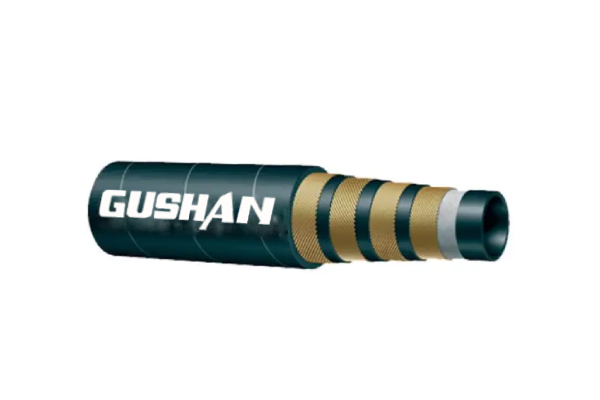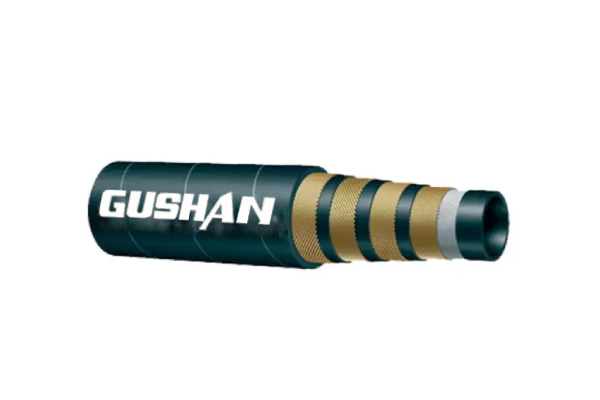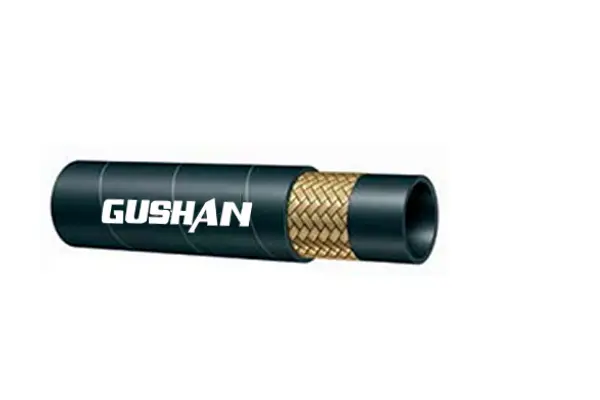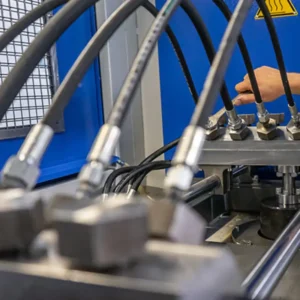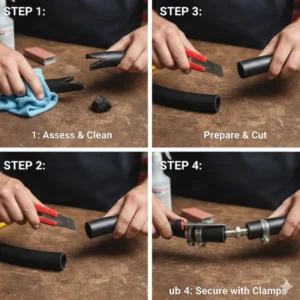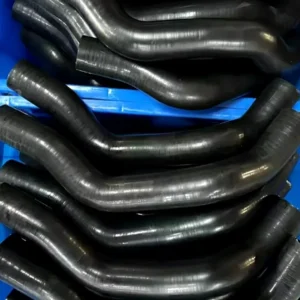Hydraulic hoses are critical components in many industrial and mobile equipment. However, they can become stuck due to factors like corrosion, rust, or tight spaces. A stuck hose can lead to system malfunctions, downtime, and potential safety hazards.
This blog post will provide a step-by-step guide on how to safely and effectively remove a stuck hydraulic hose. We’ll cover essential safety precautions, necessary tools, and effective removal techniques. Whether you’re a seasoned mechanic or a DIY enthusiast, this guide will equip you with the knowledge to tackle this challenging task with confidence.
By following these instructions, you can minimize downtime, prevent damage to equipment, and ensure the safe and efficient operation of your hydraulic systems.
Why Hydraulic Hose Get Stuck
Hydraulic hoses can get stuck for a variety of reasons, including:
- Corrosion: Over time, the metal fittings on the hose can corrode to the components they’re attached to. This creates a tight, almost fused bond that makes removal difficult.
- Seizing: If the hose has been subjected to high temperatures or has been exposed to contaminants, the fittings can seize together. This can make it extremely difficult to loosen the connection.
- Over-tightening: If the hose was initially installed with excessive force, the fittings can become overly tightened, making them difficult to loosen without risking damage.
- External Factors: Obstructions like other components or tight spaces can hinder access to the hose fittings, making it challenging to apply the necessary tools and leverage.
- Hose Damage: If the hose itself is damaged (e.g., kinked, crushed), it can become deformed and stuck in place, making removal more difficult.
These are just some of the common reasons why hydraulic hoses can become stuck. It’s important to carefully assess the situation and identify the specific cause before attempting any removal.
How to Remove Stuck Hydraulic Hose
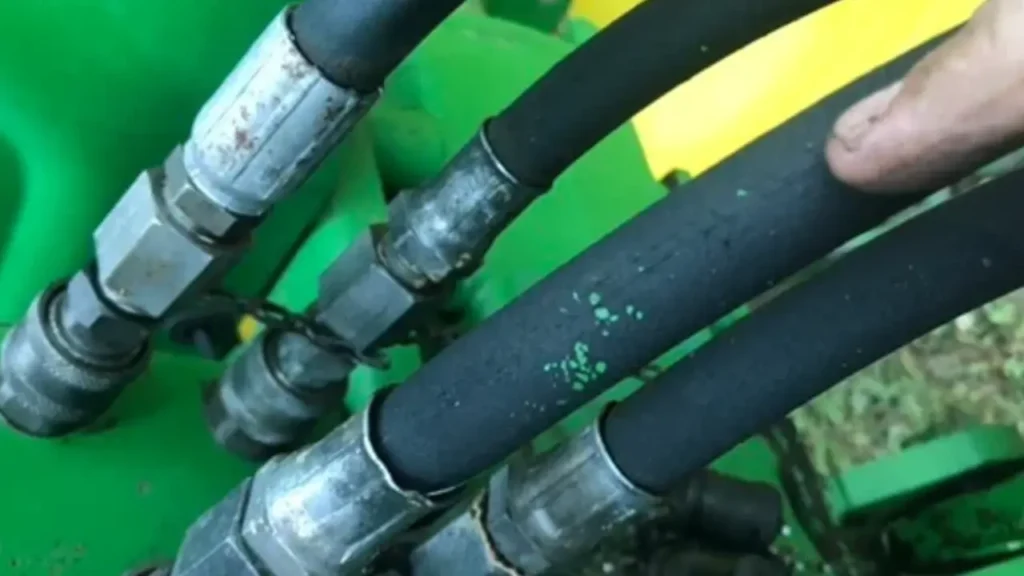
Here’s a breakdown of how to remove a stuck hydraulic hose, with each step expanded for clarity:
Step 1: Safety First
Isolate the System: Before attempting any removal, shut down and isolate the hydraulic system. This usually involves:
- Turning off the power source: Switch off the engine or disconnect the power supply to the hydraulic pump.
- Activating emergency shut-off valves: If available, engage emergency shut-off valves to immediately stop hydraulic fluid flow.
- Lowering loads: If the hose is connected to a lifting mechanism, carefully lower any suspended loads to prevent accidents.
- Check for Pressure: Even after shutting down, residual pressure may remain in the system. Use a pressure gauge to verify that the system is completely depressurized before proceeding.
- Wear Protective Gear: Always wear appropriate safety gear, including:
- Safety glasses or goggles: To protect your eyes from potential fluid sprays or leaks.
- Gloves: To protect your hands from cuts, abrasions, and exposure to hydraulic fluid.
- Long-sleeved clothing: To minimize skin contact with hydraulic fluid.
Step 2: Access and Assessment
Locate the Hose: Identify the specific hydraulic hose that needs to be removed.
Assess the Situation:
- Examine the hose for damage: Look for signs of wear, tears, or other damage that may have contributed to the sticking issue.
- Check for obstructions: Determine if any external factors are hindering hose removal, such as tight spaces, interference from other components, or corrosion.
- Evaluate the connection type: Identify the type of fittings used (e.g., JIC, SAE) to select the appropriate tools.
Step 3: Prepare for Removal
Collect Necessary Tools: Gather the following tools:
- Wrenches or sockets: Sizes should match the fittings on the hose.
- Pipe wrenches (if applicable): For gripping and turning the hose or fittings.
- Penetrating oil: To help loosen rusted or seized connections.
- Clean rags or absorbent material: To contain any spilled fluid.
- A suitable container: To collect the drained hydraulic fluid.
Clean the Area: Remove any debris or obstructions around the hose to provide better access and prevent contamination.
Apply Penetrating Oil: Liberally apply penetrating oil to the fittings to help loosen them. Allow the oil to penetrate for several minutes or even overnight for stubborn cases.
Step 4: Removal Techniques
Back and Forth Motion: Gently rock the hose back and forth while applying slight pressure to the fittings. This can help break any corrosion or rust bonds.
Use of Wrenches:
- Proper Wrench Placement: Place wrenches on both the hose fitting and the corresponding fitting on the component (e.g., pump, cylinder).
- Apply Counter-Pressure: Turn one wrench while holding the other wrench stationary to prevent the component from turning.
- Avoid Excessive Force: Apply steady, controlled pressure. Avoid using excessive force, which can strip the fittings or damage the component.
Consider a Hose Removal Tool: In some cases, specialized hose removal tools may be necessary. These tools can help to grip and turn the hose fitting without damaging it.
Step 5: Fluid Drainage and Clean-up
- Position a Drain Pan: Place a suitable container (drain pan) beneath the hose to collect the draining hydraulic fluid.
- Loosen the Fittings: Carefully loosen the fittings, allowing the hydraulic fluid to drain into the container.
- Remove the Hose: Once the fluid has drained, carefully remove the hose from the fittings.
- Clean the Area: Wipe up any spilled fluid and dispose of it properly according to environmental regulations.
Step 6: Installation of New Hose
- Select a Replacement Hose: Choose a new hose with the correct specifications (size, pressure rating, material) for the application.
- Prepare the New Hose: Cut the new hose to the appropriate length, if necessary.
- Attach the New Hose: Carefully attach the new hose to the fittings, ensuring proper alignment and tightness.
- Bleed the System: After installing the new hose, bleed the hydraulic system to remove any air bubbles.
Step 7: Final Inspection and Testing
- Inspect for Leaks: Carefully inspect all connections for any leaks.
- Test the System: Operate the hydraulic system to ensure proper function and check for any issues.
- Dispose of Old Fluid and Hose: Properly dispose of the old hydraulic fluid and the removed hose according to local regulations.
Important Notes:
- If you are unsure about any aspect of this procedure, consult with a qualified hydraulic technician or mechanic.
- Always refer to the manufacturer‘s instructions for specific equipment and safety guidelines.
- This information is for general guidance only and may not be suitable for all situations.
By following these steps carefully, you can safely and effectively remove a stuck hydraulic hose. Remember to prioritize safety throughout the entire process.
How to Prevent Hydraulic Hose Stuck
Here are some tips helping you avoid potential hydraulic hose failure, such as being stuck in the hydraulic systems.
- Torque to Spec: Tighten fittings to the manufacturer‘s recommended torque specifications. Over-tightening can cause damage and seizing, while under-tightening can lead to leaks and potential problems.
- Cleanliness: Ensure all surfaces are clean and free of debris (dirt, metal shavings) before installation. Contamination can accelerate corrosion and hinder a proper seal.
- Use of Anti-Seize Compounds: Apply a thin layer of anti-seize compound to the threads of fittings before installation. This helps prevent galling (the seizing of two metal surfaces due to friction) and corrosion, making future removal easier.
2. Regular Maintenance:
- Visual Inspections: Regularly inspect hoses for signs of wear, abrasion, cracks, or leaks. Replace any damaged hoses promptly.
- Fluid Quality: Maintain proper hydraulic fluid levels and ensure the fluid is clean and free of contaminants. Contaminated fluid can accelerate corrosion and damage system components.
- Temperature Control: Minimize exposure to extreme temperatures, which can accelerate aging and degradation of the hose and fittings.
3. Storage:
- Proper Storage: When not in use, store hoses in a cool, dry, and clean environment to prevent exposure to moisture and contaminants.
- Avoid Kinking: Avoid kinking or bending hoses excessively during storage, as this can weaken the hose and damage the internal structure.
4. Hydraulic Hose Selection:
- Choose the Right Hose: Select hoses that are appropriate for the application’s pressure, temperature, and fluid type. Using the wrong hose can lead to premature failure and increase the risk of issues.
By implementing these preventative measures, you can significantly reduce the risk of hydraulic hose fittings becoming stuck and minimize the need for costly and time-consuming repairs.
Conclusion
Removing a stuck hydraulic hose can be challenging, but with careful planning and the right approach, it can be done safely and effectively. By following the steps outlined in this guide, you can minimize the risk of damage to the hose, fittings, and surrounding components. Remember to prioritize safety throughout the entire process and consult with a qualified technician if you encounter any difficulties.
For the highest quality hydraulic hoses and expert advice, contact our factory today. We offer a wide range of durable and reliable hoses to suit various applications. Our team of experienced professionals can assist you in selecting the right hose for your specific needs. Contact us for a free quote and experience the difference.

